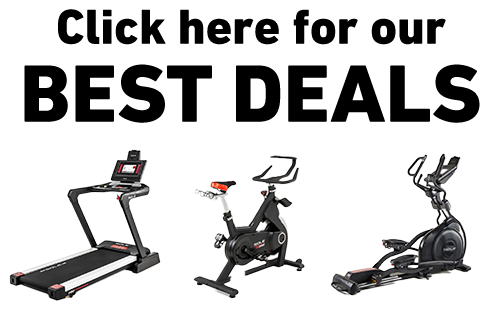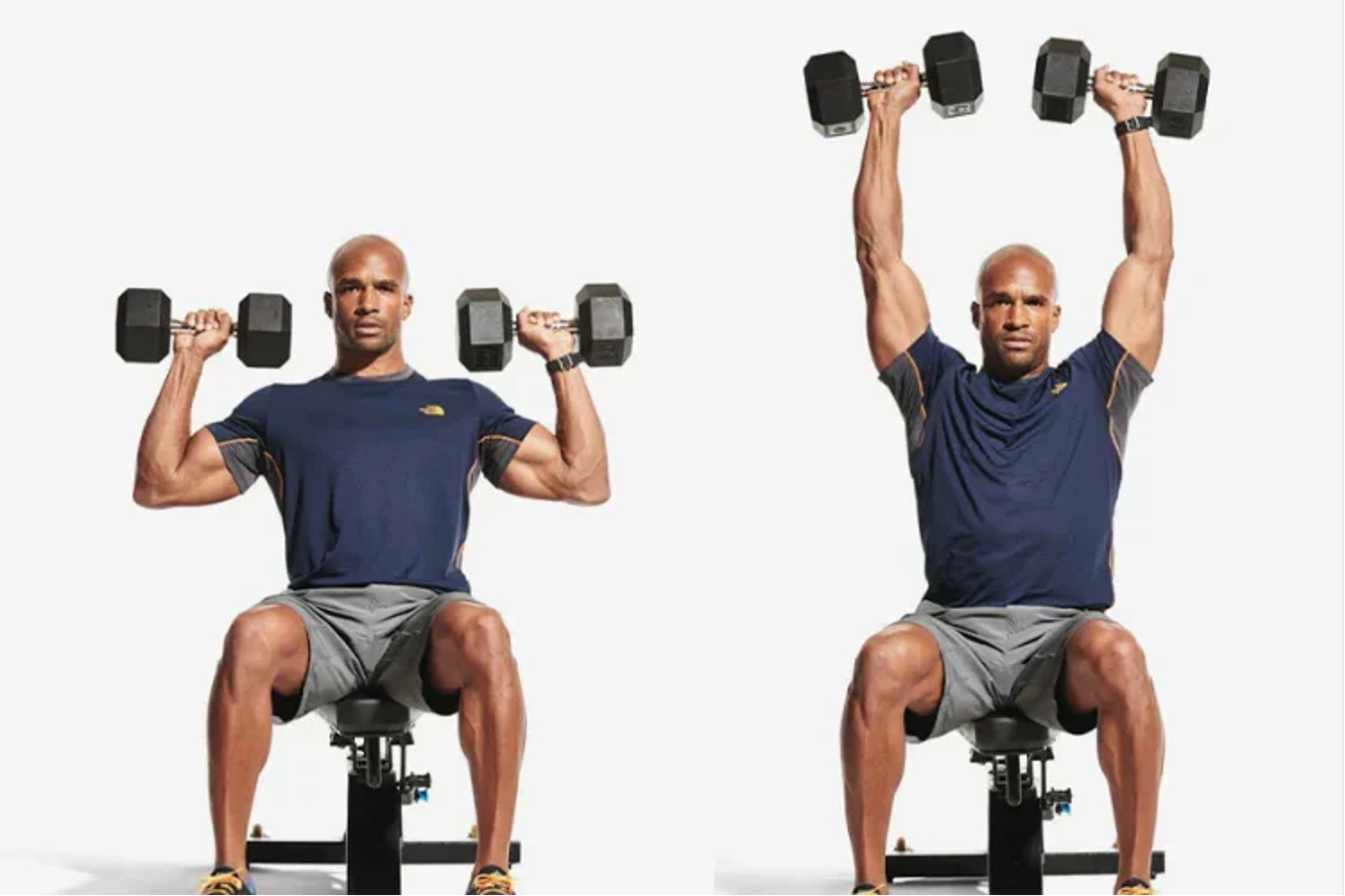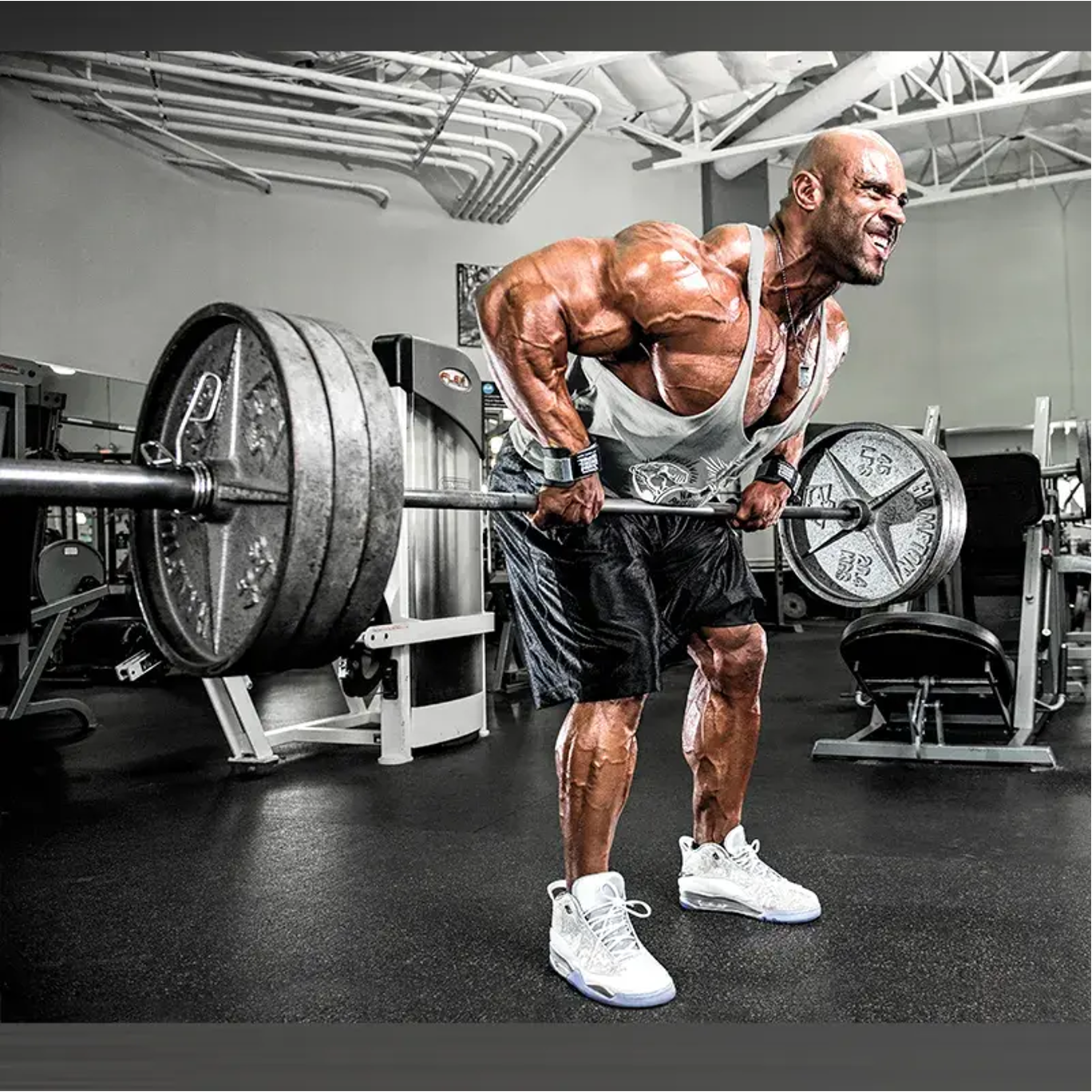Key Takeaways
- The Arnold Press throws in a twist that hits your shoulders from multiple angles, while the Shoulder Press keeps it simple but mighty.
- For building showy, sculpted shoulders, Arnold Press takes the crown due to its greater range of motion.
- The Shoulder Press lets you push more weight to build raw strength and stability.
- Your choice depends on whether you're chasing cannonball delts or brute overhead power.
- SOLE adjustable dumbbells provide the perfect tools for both shoulder exercises, allowing for smooth progression without needing multiple weight sets.
Arnold vs Shoulder Press Overview
Basic Definitions
- The Arnold Press was invented by Arnold Schwarzenegger, the guy who basically had to walk through doors sideways because of his shoulders. This move adds a twist to the standard press. You start with dumbbells in front of your shoulders, palms facing your body, then rotate your wrists as you press up so your palms face forward at the top.
- The Shoulder Press, also called the Overhead Press, is the no-frills classic. You simply press the weight straight overhead, whether you're using dumbbells, a barbell, or a machine. No fancy rotations, just straight-up vertical pushing power.
Core Differences
The Arnold Press forces your shoulders through a corkscrew motion that hits muscles from multiple angles. This rotation means you'll typically use lighter weights but get more comprehensive development.
The Shoulder Press is all about that straight vertical push, which keeps things simple but mighty. Without the rotation, you can usually load up more weight, making it better for pure strength gains.
Primary Usage
Now, when should you use each exercise? If your goal is to enhance shoulder mobility and muscle growth, the Arnold press should be your go-to. Its dynamic movement pattern ensures that you engage a variety of muscles, promoting overall shoulder development.
However, if you're looking to increase strength and lift heavier weights, the shoulder press is your best bet. It allows for a more stable and powerful lift, which focuses on increasing shoulder power.
|
At SOLE, we're proud to offer the best exercise equipment for your home or gym. Our machines are built to meet the highest quality and performance standards, making them perfect for fitness enthusiasts at any level. SOLE Products
|
Specific Differences
Muscle Activation
The rotation in the Arnold Press is the game-changer here:
- It forces your anterior (front), lateral (side), and posterior (rear) deltoid heads to work together throughout the movement.
- The twisting motion uses your rotator cuff muscles—those small but crucial stabilizers that keep your shoulder joint healthy.
- You'll even feel it in your upper chest and traps as they jump in to help with the complex movement.
The Shoulder Press, meanwhile, is more focused:
- It hammers your anterior and lateral deltoids primarily.
- Your triceps play a bigger supporting role since they're pushing through a straight line.
- Your core works harder to stabilize your body, especially with heavier weights.
If you're aiming for muscle growth and hypertrophy, the Arnold Press is more effective due to its rotational movement and comprehensive muscle engagement. (Image courtesy of Men’s Health)
Movement and Mechanics
Arnold Press: You start in what looks like the end position of a bicep curl—hands at shoulder height with palms facing you. As you press up, you rotate your palms to face forward by the time your arms are fully extended. This creates a semi-circular path for the weights rather than a straight line. On the way down, you reverse the rotation, ending with palms facing your body again.
Shoulder Press: You begin with the weights at shoulder height, palms facing forward (or holding a barbell in front of your shoulders). You press straight up until your arms are fully extended overhead, then lower back to the starting position. Unlike Arnold Press, Shoulder Press has a direct path.
Benefits of Each Exercise
Arnold Press Benefits
- Superior Range of Motion: By starting with palms facing your body and rotating as you press, you're forcing your shoulders through a more complete arc of motion. This extra work translates to better muscle growth and mobility.
- Balanced Development: The rotation hits all three heads of the deltoid more evenly, preventing the common "front-delt dominant" look that many lifters develop.
- Shoulder Health: The rotational component strengthens those often-neglected rotator cuff muscles, potentially reducing injury risk (as long as you're using appropriate weight and form).
- Less Wrist Strain: The neutral grip at the bottom position can be more comfortable for those with wrist issues compared to the fully pronated grip of a standard press.
- Mental Engagement: The rotation makes the exercise more interesting to perform, which might keep you more engaged with your training.
Shoulder Press Benefits
- Raw Strength Development: Without the complexity of rotation, you can typically load this movement with more weight, leading to greater strength gains.
- Simplicity: The straightforward movement pattern makes it easier to learn and maintain proper form, especially when fatigue sets in.
- Versatility: You can perform it with dumbbells, barbells, kettlebells, resistance bands, or machines, making it adaptable to any gym situation.
- Performance Carryover: The shoulder press directly translates to many athletic movements and everyday tasks that require overhead strength.
- Progressive Overload: The simpler movement pattern makes it easier to track progress and gradually build muscle over time.
Muscles Worked
Arnold Press Muscles
Primary Muscles:
- Anterior deltoid (front shoulder)
- Lateral deltoid (side shoulder)
- Posterior deltoid (rear shoulder)
Secondary Muscles:
- Rotator cuff muscles (supraspinatus, infraspinatus, teres minor, subscapularis)
- Serratus anterior (the "boxer's muscle" along your ribs)
- Upper trapezius (upper back)
- Triceps brachii (back of arms)
Shoulder Press Muscles
Primary Muscles:
- Anterior deltoid (front shoulder)
- Lateral deltoid (side shoulder)
Secondary Muscles:
- Triceps brachii (back of arms)
- Upper trapezius (upper back)
- Serratus anterior (along your ribs)
- Core muscles (especially when standing)
Choosing the Right Exercise
The Arnold press requires a good range of motion and coordination due to its rotational movement. If you have shoulder mobility issues or are new to weightlifting, start with lighter weights to master the form. (Image courtesy of Men’s Journal)
Fitness Goals
Choose the Arnold Press if:
- Shoulder aesthetics and that "3D look" are your priority
- You want to improve shoulder mobility and health
- You're looking to break through a plateau in shoulder development
- You have the time and focus for a more technical movement
Choose the Shoulder Press if:
- Pure strength gains are your goal
- You're training for performance in a sport or activity
- You want to lift heavier weights overhead
- You prefer simpler exercises that are easier to progress
Physical Capabilities
Arnold Press Considerations:
- Requires good existing shoulder mobility
- Can be harder on those with existing shoulder impingement
- Demands more coordination and body awareness
- Generally requires lighter weights to maintain proper form
Shoulder Press Considerations:
- More straightforward for beginners to learn
- Can be modified easily (seated, standing, different equipment)
- It may be better for those with limited rotational mobility
- Allows for heavier loading when appropriate
Why Wait for The Gym? Own Your Shoulder Day at Home with SOLE Equipment
Forget fighting for the shoulder press station during peak hours. SOLE's home setup gives you everything you need to forge serious delts on your schedule.
The SW180 Adjustable Dumbbells are game-changers for shoulder work. You get 16 different weights (5–80 lbs) in one sleek package. No more dumbbells rolling around your garage—just twist and lift. These bad boys stay perfectly balanced overhead, unlike those wonky adjustable sets that feel like they're trying to escape mid-rep.
SOLE adjustable dumbbells provide the perfect balance and quick weight-change system for both shoulder exercises.
Here's what sets SOLE apart: the weight stays centered even when you're grinding out that last Arnold Press rep. The handles fit your hands just right, letting you rotate smoothly from start to finish without death-gripping the weight. Your shoulders do the work, not your forearms.
Prefer barbell work? The SW111 Olympic Bar is a beast. With 194,000 PSI tensile strength, this bar won't bend when you load it up for heavy overhead work. The knurling hits that sweet spot—enough grip to stay secure when you're sweating bullets, but not so aggressive it shreds your palms during volume work.
Having both in your arsenal opens up killer programming options. Crush heavy barbell presses for pure strength, then grab those adjustables for Arnold presses to hit every angle. No waiting, no rushing, no compromises, just pure shoulder gains.
Standing presses need solid footing, and the SOLE Equipment Mat delivers. This 36.5" x 78" platform gives you rock-solid stability so you can drive hard through your feet. Plus, if you bail on a rep (it happens), your floor stays protected.
And with the SOLE+ App, you'll see exactly how to nail both movements, learn the tiny tweaks that make huge differences, and discover how to program them together for maximum growth.
Frequently Asked Questions (FAQ)
What is the Arnold Press?
The Arnold Press is a shoulder exercise created by seven-time Mr. Olympia, Arnold Schwarzenegger. It starts with your hands at shoulder height, palms facing your body (like you just finished a bicep curl).
As you press the weights overhead, you rotate your wrists so your palms face forward at the top. This rotation adds range of motion and hits the shoulders from multiple angles that a standard press misses.
Which exercise is better for strength?
The Shoulder Press wins for pure strength building. Without the rotational component, you can typically push more weight overhead, which is the primary driver of strength gains. If your goal is to move the most weight possible or prepare for strength sports, the standard press is your go-to.
That said, the Arnold Press will still build considerable strength while offering additional benefits for shoulder development and health.
Can beginners do both exercises?
Yes, but with some caveats. Beginners should master the basic Shoulder Press first to build a foundation of strength and stability. Once you're comfortable with that movement pattern, you can introduce the Arnold Press with lighter weights to learn the rotational component.
For either exercise, beginners should focus on perfect form before adding weight, possibly starting with just the empty bar or very light dumbbells.
How often should I do shoulder presses?
For most people, directly training shoulders 1–2 times per week is sufficient, especially since your shoulders also get worked during chest and back exercises.
If you're following a typical split routine, you might have one dedicated shoulder day where you perform both types of presses, or you might include a press variation in two different workouts.
What's the best shoulder workout progression using SOLE equipment?
Start your session with barbell shoulder presses on the SW111 for heavy strength work: think 4 sets of 6–8 reps while you're fresh. The rock-solid bar lets you push serious weight without worrying about stability issues. Then grab the SW180 adjustable dumbbells for Arnold presses in the 10–12 rep range. This combo hits your shoulders from every angle. The barbell builds raw pressing power while the dumbbells carve out that 3D shoulder look.
The real magic happens when you superset them. Bang out heavy barbell presses, then immediately drop to lighter dumbbells for Arnolds. Your shoulders won't know what hit them.




Leave a comment
This site is protected by hCaptcha and the hCaptcha Privacy Policy and Terms of Service apply.